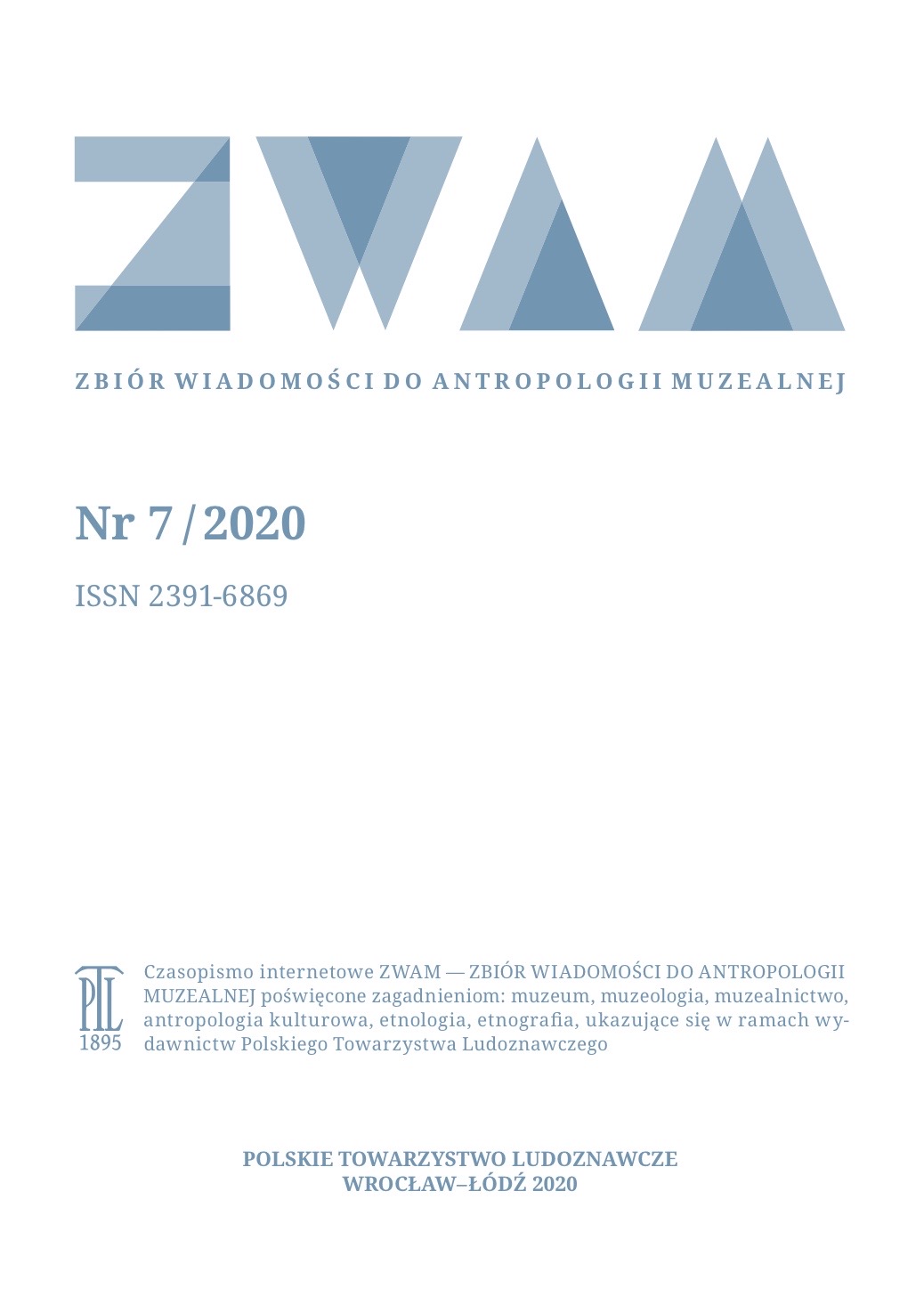Stan i potrzeby badań nad tradycyjnym budownictwem chłopskim w muzeach (na przykładzie łódzkiego ośrodka etnograficznego i wybranych placówek z terenu Polski środkowej)
About the need and importance of research into traditional peasant architecture in museums (shown on the example of chosen institutions in Central Poland)
Author(s): Piotr CzepasSubject(s): Cultural history, Museology & Heritage Studies, Architecture, Cultural Anthropology / Ethnology
Published by: Polskie Towarzystwo Ludoznawcze
Keywords: open-air museum; traditional peasant buildings; Łęczyca Peasant Homestead in Kwiatkówek; Tatar Homestead in Radomsko;
Summary/Abstract: This article attempts to address the current state of on-site research conducted by museum institutions, devoted to the issue of traditional peasant buildings. As part of the article, a review of research work undertaken in Central Poland throughout the 20th century was carried out. The review is particularly focused on on-site research performed on behalf of the Museum of Archaeology and Ethnography in Łódź in Stobiecko Miejskie (being now part of the City of Radomsko) and in selected villages of Łęczyca region. Its output contributed to the establishment of two facilities in the first decades of the 21st century, i.e. the Tatar Homestead and Łęczyca Peasant Homestead, which are part of the Stanisław Sankowski Regional Museum in Radomsko and the Museum of Archaeology and Ethnography in Łódź, respectively. The article also attempts to answer the question whether it is currently justi-fied to conduct ethnographic on-site research on behalf of museums on rural buildings erected after World War II.
Journal: Zbiór Wiadomości do Antropologii Muzealnej
- Issue Year: 7/2020
- Issue No: 1
- Page Range: 135-148
- Page Count: 13
- Language: Polish

